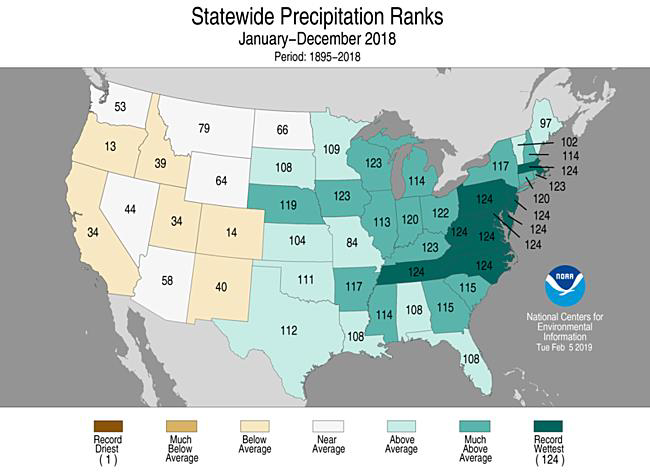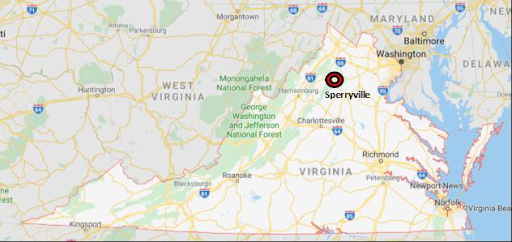The following is a Twitter thread posted by the National Centers for Environmental Information- Climate (@NOAANCEIClimate). It reviews the verification of state record precipitation for Virginia in 2018 by the State Climate Extremes Committee (SCEC), and a CoCoRaHS station was in the mix. CoCoRaHS measurements can be considered for records, and are subject to the same review as Cooperative stations in this regard. The Twitter thread starts below the cut. Links to the reports about the record are at the end of the thread.
=====================================================================
October 13, 2020
In 2018, buckets of rain fell on Virginia. Not just one but several weather stations reported annual precipitation that exceeded the state record. Which would take the prize? Only NCEI’s State Climate Extremes Committee could decide. And it got complicated!
In October 2018, the remnants of Hurricane Michael soaked Virginia. Michael followed Florence (September) and Alberto (May), and these storms arrived amid a persistent wet weather pattern in the East. Nine states from TN to MA recorded their wettest year on record in 2018.
Three stations reported annual precip totals that bested Virginia’s previous (unofficial) record of 86.06", set in 1996: 1) Montebello, 2) Cave Spring, near Roanoke, and 3) Sperryville. Only one would emerge on top. The SCEC was convened to test the claims.

First contender: Montebello! Claimed precipitation total: 104”. But SCEC found some measurements were wrong, knocking the total down to 89.90”. Other problems: missed observations and failure to record liquid-equivalent measurements for snow.
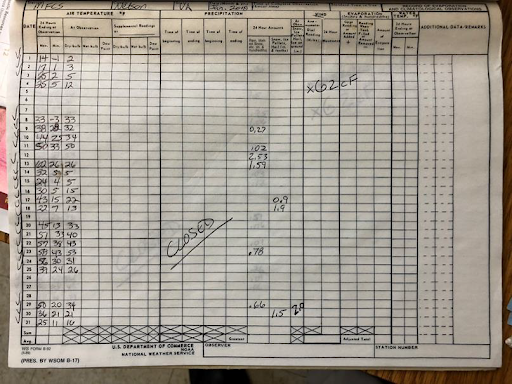
Here’s the kicker: Montebello’s gauge was too close to a fence, and thus might have collected extra drips, calling into question the accuracy of all station measurements. SCEC verdict: Rejected!
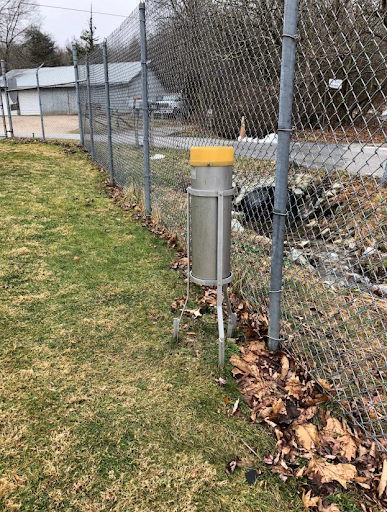
Next contender: Cave Spring, near Roanoke! Claimed precipitation total: 87.33”. Once again, there were problems: snow-water equivalents were not recorded for several days. (The ‘M’ in the table means ‘missing.’)
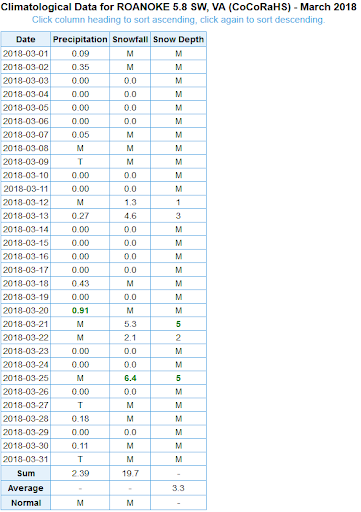
Even worse: the station had its gauge mounted level with a deck rail, making it “highly likely that raindrops hitting the deck railing would enter the gauge,” thus undermining all measurements. SCEC verdict: Rejected!

Next contender: Sperryville! Claimed precipitation total: 94.43”. This station was operated by a music teacher who had been observing for more than two decades. A staffer from the NWS Baltimore-Washington visited the site and found that “his paper forms are extremely meticulous.”
The gauge was well positioned, without a fence in sight (bonus: it was in a beautiful vegetable garden!). SCEC verdict: Approved, unanimously! The Sperryville annual precipitation total of 94.43” became the official record for Virginia.
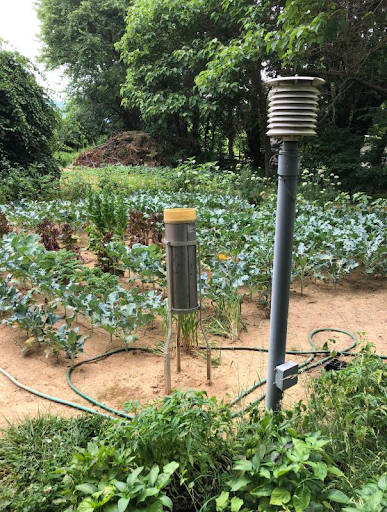
The moral of this SCEC story: Record observations daily, don’t forget snow-water equivalents, and keep your rain gauge away from fences and railings! Read the SCEC reports on Virginia: bit.ly/2ZZWF9V, bit.ly/3mLlyQr.

